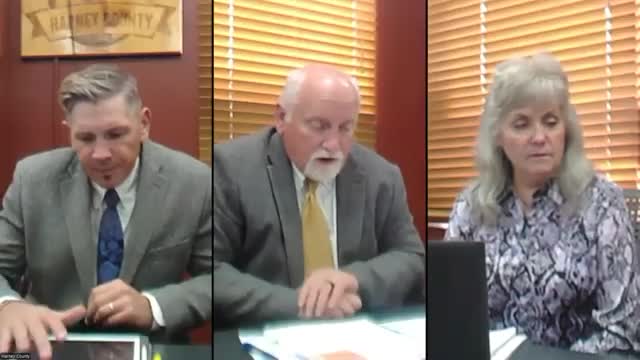Harnett County Court Approves Uniform Fee Schedule for County Departments
October 03, 2025 | Harney County, Oregon
This article was created by AI summarizing key points discussed. AI makes mistakes, so for full details and context, please refer to the video of the full meeting. Please report any errors so we can fix them. Report an error »

The Harney County Court convened on October 1, 2025, to discuss several key agenda items, primarily focusing on the establishment of a uniform fee schedule for various county departments. The meeting began with a review of the legal requirements for ordinance readings, as outlined in Oregon Revised Statutes (ORS) Chapter 203.045. It was noted that every ordinance must be read fully in an open meeting on two separate days, at least 13 days apart, unless specific conditions are met.
To streamline the process, the court introduced a QR code system that allows the public to access the fee schedule digitally, addressing concerns for those without smartphones by ensuring physical copies are available at public locations, including the post office.
The court proceeded to read Ordinance Number 2025-01, which aims to establish a uniform fee schedule for services provided by Harney County departments. The ordinance outlines the purpose of the fees, which are necessary for the county to provide core services funded through the annual tax base. It emphasizes the need for a structured fee schedule to ensure transparency and compliance with state statutes.
Key sections of the ordinance include the authority under which it is enacted, the specific fees to be charged, and provisions for compliance with existing laws. The ordinance also includes a severability clause, ensuring that if any part is deemed invalid, the remainder remains effective.
The court highlighted the importance of creating a robust building department within Harney County, noting that previous funding practices had resulted in significant financial resources being sent to Salem. The county aims to retain more funds locally by enhancing its services and collaborating with neighboring counties.
The next reading of the ordinance is scheduled for October 15, 2025, marking a critical step in the county's efforts to implement a more effective fee structure and improve service delivery to its residents. The court's discussions reflect a commitment to mindful decision-making in balancing the county's financial needs with the services provided to the community.
To streamline the process, the court introduced a QR code system that allows the public to access the fee schedule digitally, addressing concerns for those without smartphones by ensuring physical copies are available at public locations, including the post office.
The court proceeded to read Ordinance Number 2025-01, which aims to establish a uniform fee schedule for services provided by Harney County departments. The ordinance outlines the purpose of the fees, which are necessary for the county to provide core services funded through the annual tax base. It emphasizes the need for a structured fee schedule to ensure transparency and compliance with state statutes.
Key sections of the ordinance include the authority under which it is enacted, the specific fees to be charged, and provisions for compliance with existing laws. The ordinance also includes a severability clause, ensuring that if any part is deemed invalid, the remainder remains effective.
The court highlighted the importance of creating a robust building department within Harney County, noting that previous funding practices had resulted in significant financial resources being sent to Salem. The county aims to retain more funds locally by enhancing its services and collaborating with neighboring counties.
The next reading of the ordinance is scheduled for October 15, 2025, marking a critical step in the county's efforts to implement a more effective fee structure and improve service delivery to its residents. The court's discussions reflect a commitment to mindful decision-making in balancing the county's financial needs with the services provided to the community.
View full meeting
This article is based on a recent meeting—watch the full video and explore the complete transcript for deeper insights into the discussion.
View full meeting
